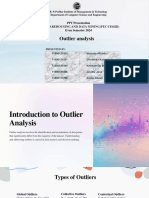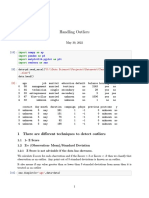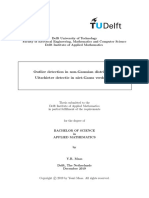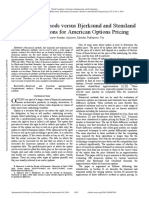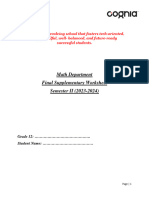0% found this document useful (0 votes)
17 views11 pagesGuide On Outlier Detection Methods
This document provides a comprehensive guide on outlier detection methods essential for data cleaning in machine learning. It discusses various techniques such as Z-score, IQR, and percentile methods for identifying and treating outliers, along with practical implementations in Python. Proper handling of outliers is emphasized as crucial for enhancing model accuracy and reliability across different domains.
Uploaded by
surajgpt123.proCopyright
© © All Rights Reserved
We take content rights seriously. If you suspect this is your content, claim it here.
Available Formats
Download as PDF, TXT or read online on Scribd
0% found this document useful (0 votes)
17 views11 pagesGuide On Outlier Detection Methods
This document provides a comprehensive guide on outlier detection methods essential for data cleaning in machine learning. It discusses various techniques such as Z-score, IQR, and percentile methods for identifying and treating outliers, along with practical implementations in Python. Proper handling of outliers is emphasized as crucial for enhancing model accuracy and reliability across different domains.
Uploaded by
surajgpt123.proCopyright
© © All Rights Reserved
We take content rights seriously. If you suspect this is your content, claim it here.
Available Formats
Download as PDF, TXT or read online on Scribd
/ 11













